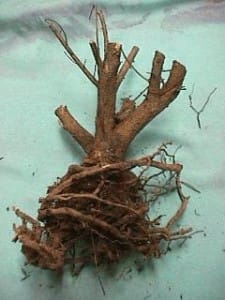Source(s): Taft Eaker, Former UGA Extension Homeowner IPM Specialist
Improper planting is a common problem with many woody and herbaceous ornamentals. Results of improper planting are commonly seen on azaleas, boxwoods, hollies and junipers, but problems can occur with any plant. Symptoms usually include poor growth, and affected plants are often seen as “off-color” and unhealthy-looking with low vigor. Plants may develop branch dieback and eventually die due to environmental stresses resulting from poor planting.
Improper planting can result from poor soil and planting hole preparation, failure to incorporate organic amendments and/or failure to break up the root ball. Planting holes should be dug twice as wide as the root ball and eight inches deeper than the root ball. Although the hole is dug deeper than the root ball, the plant should not be set too deeply in the hole. Backfill with clod-free soil under the root ball so that the top of the root ball is level with the surrounding ground. Azaleas should be set in the planting hole with the top of the root ball slightly above ground level.
Organic soil amendments such as peat moss, top soil, nature’s helper, pine bark, etc. may be helpful to improve quality of excessively sandy or clayey soils. However, soil amendments should always be evenly incorporated into the planting area/site and NOT dumped directly into the planting hole. Not mixing soil amendments into the native soil usually results in poor root growth and/or root rots as excessive moisture is retained near the roots by the uneven or irregular layers of soil texture.
Breaking up the root ball with hands or a knife prior to setting the plant into the hole helps to encourage root growth into the surrounding soil. Failure to do so usually causes the plant to continue to be root-bound (most plants are to some degree when they are purchased in containers). The roots grow inward, upward or around the root ball without penetrating the surrounding soil. (See pic above). Digging a hole just big enough for the root ball has a similar effect. Sometimes, when dying plants that have been in the ground for several years are removed, their root systems are still in the original shape of the pot.
Improper planting results in a stressed plant that is more susceptible to disease and insect attack. Plants weakened from improper planting, disease and insect attack, are then more likely to die when harsh environmental conditions occur. Plants subject to improper planting are often too injured or root-bound to save and the best approach is to start over. If replanting correctly is attempted, it should be done in early spring or fall.
Resource(s): Care of Ornamental Plants in the Landscape
Center Publication Number: 234
- Proper Planting Tips - September 23, 2013
